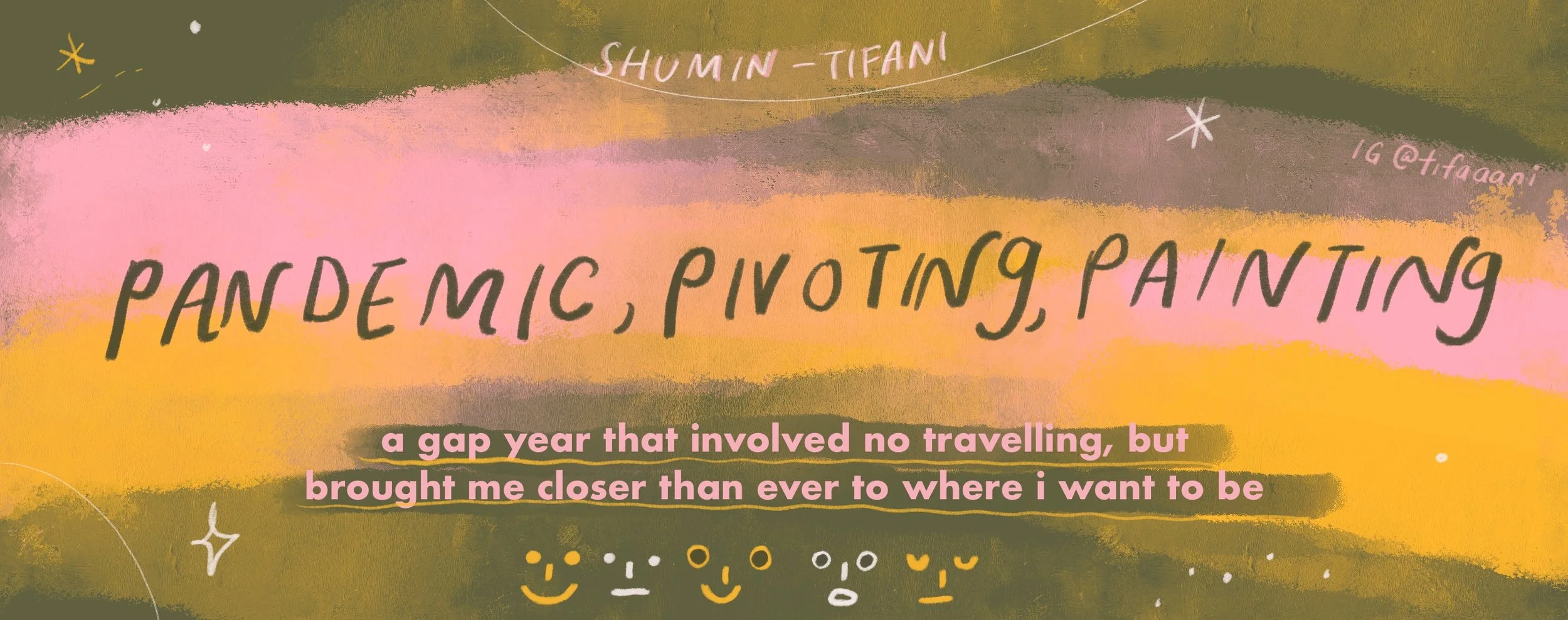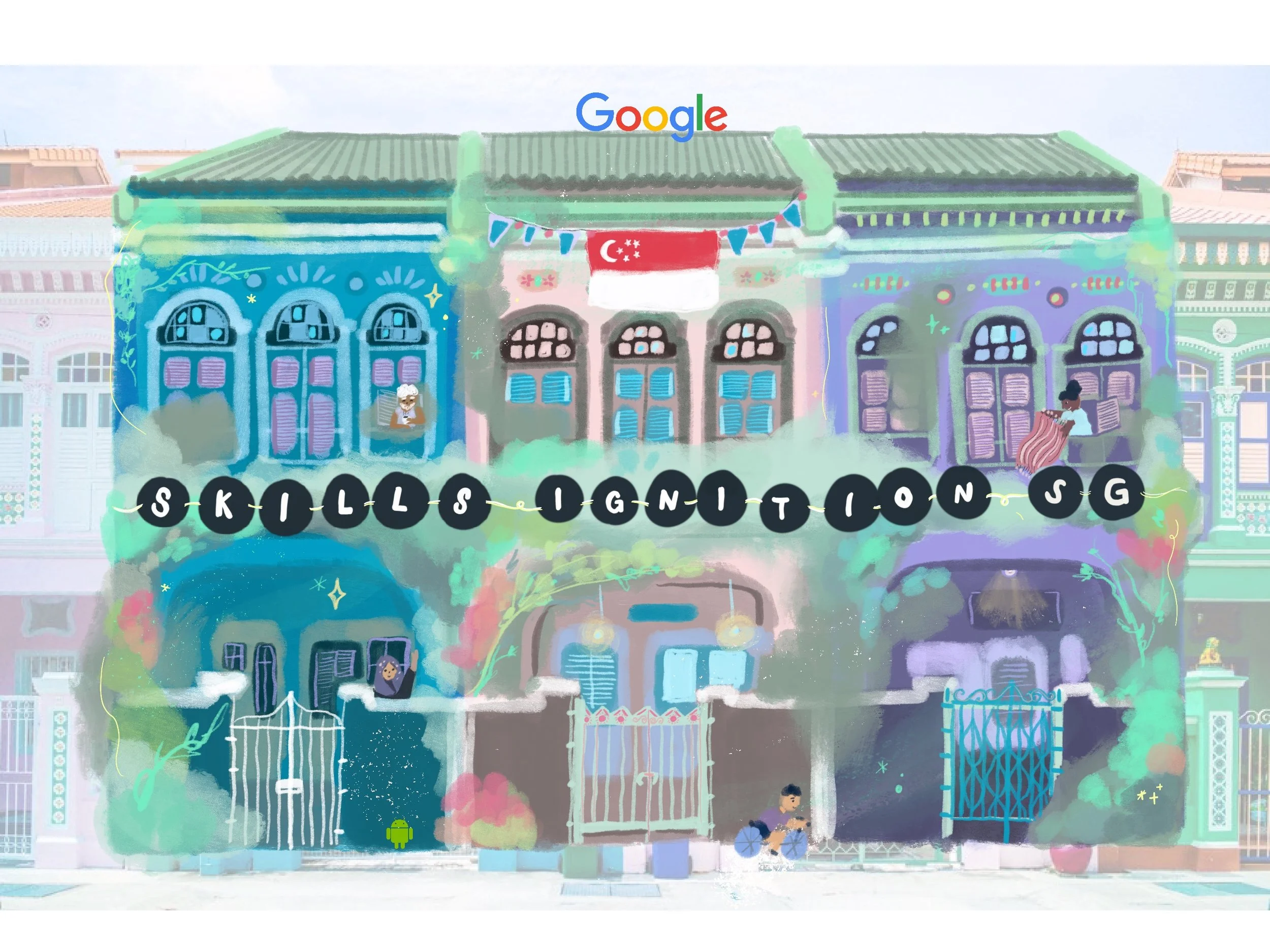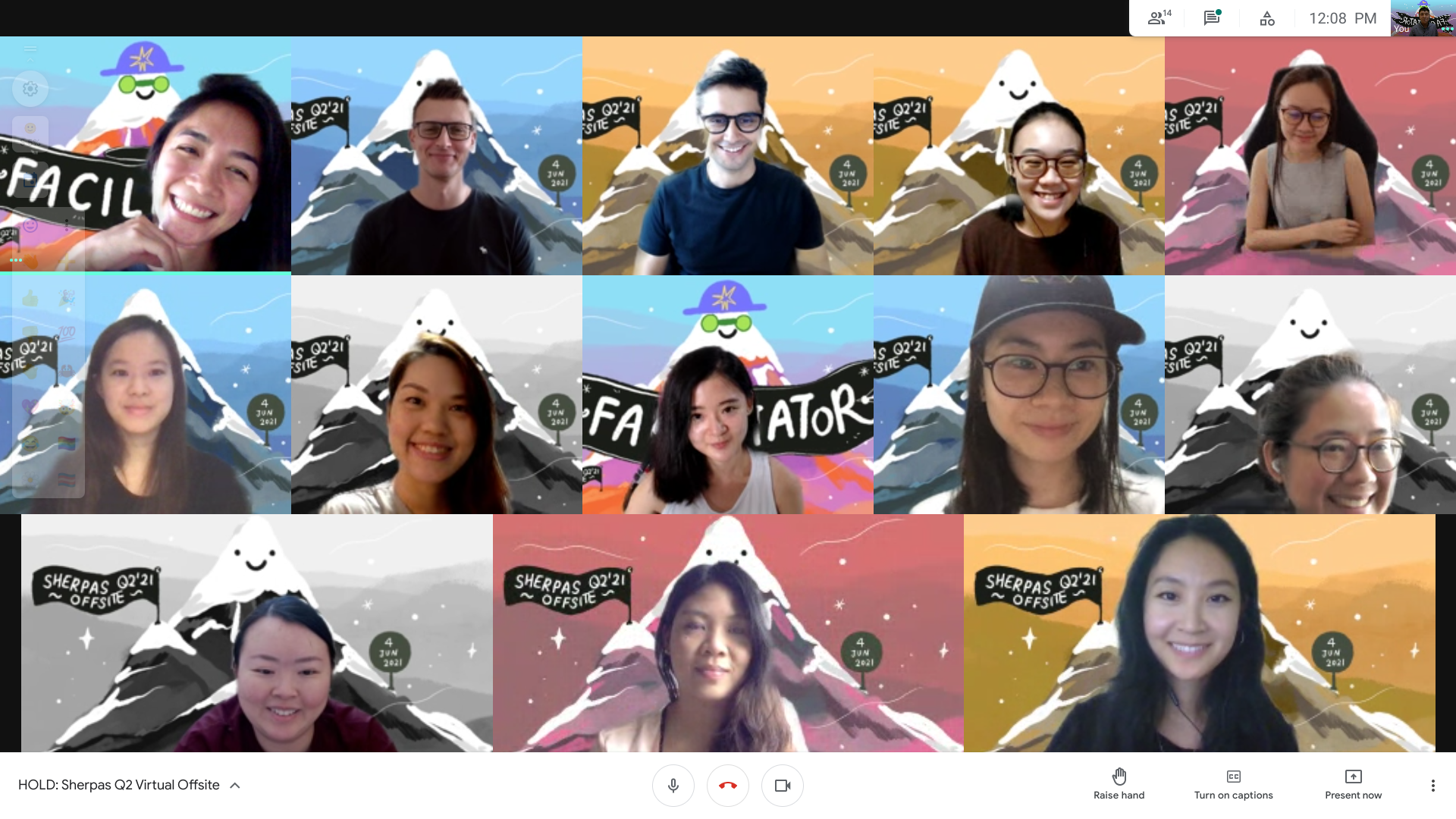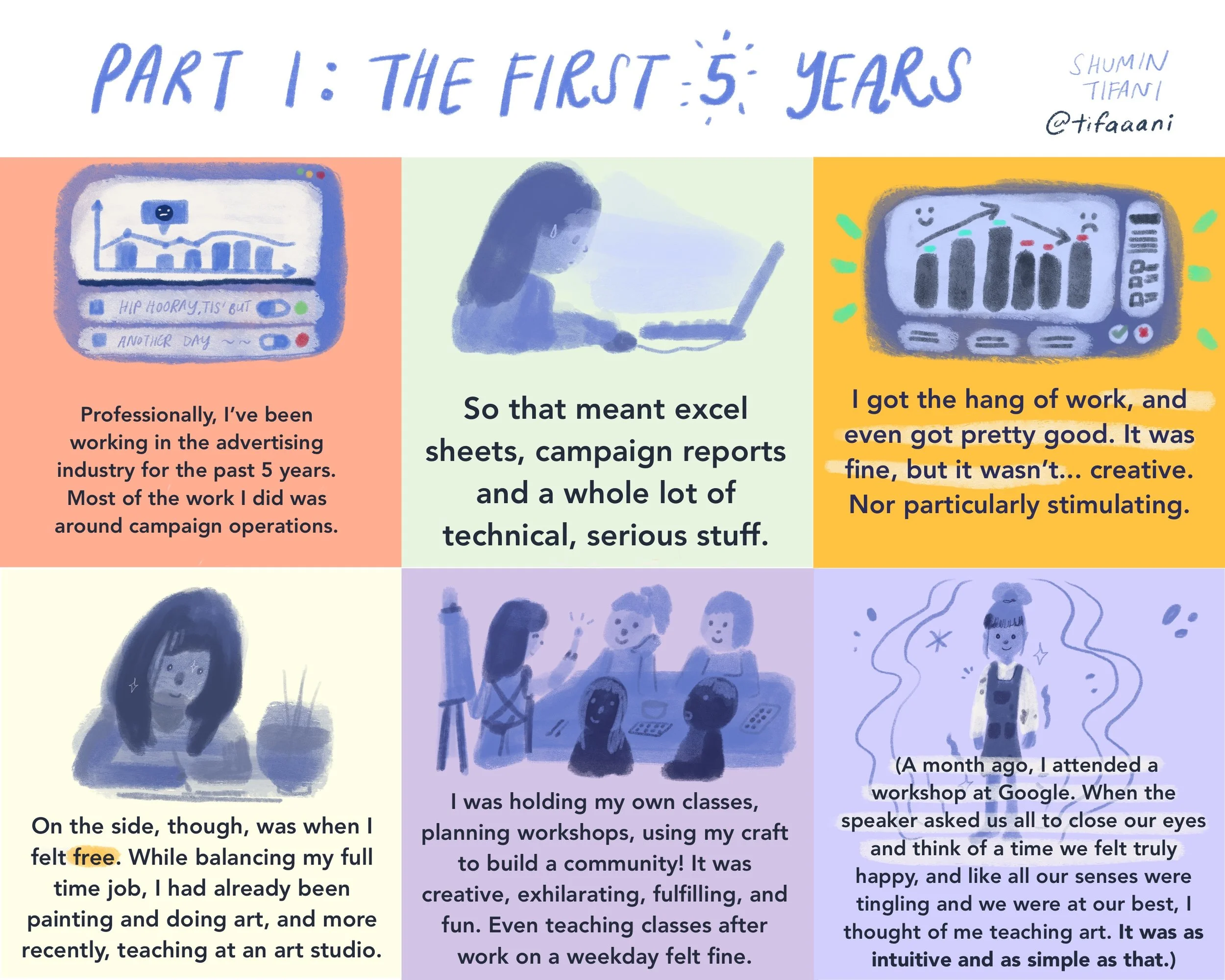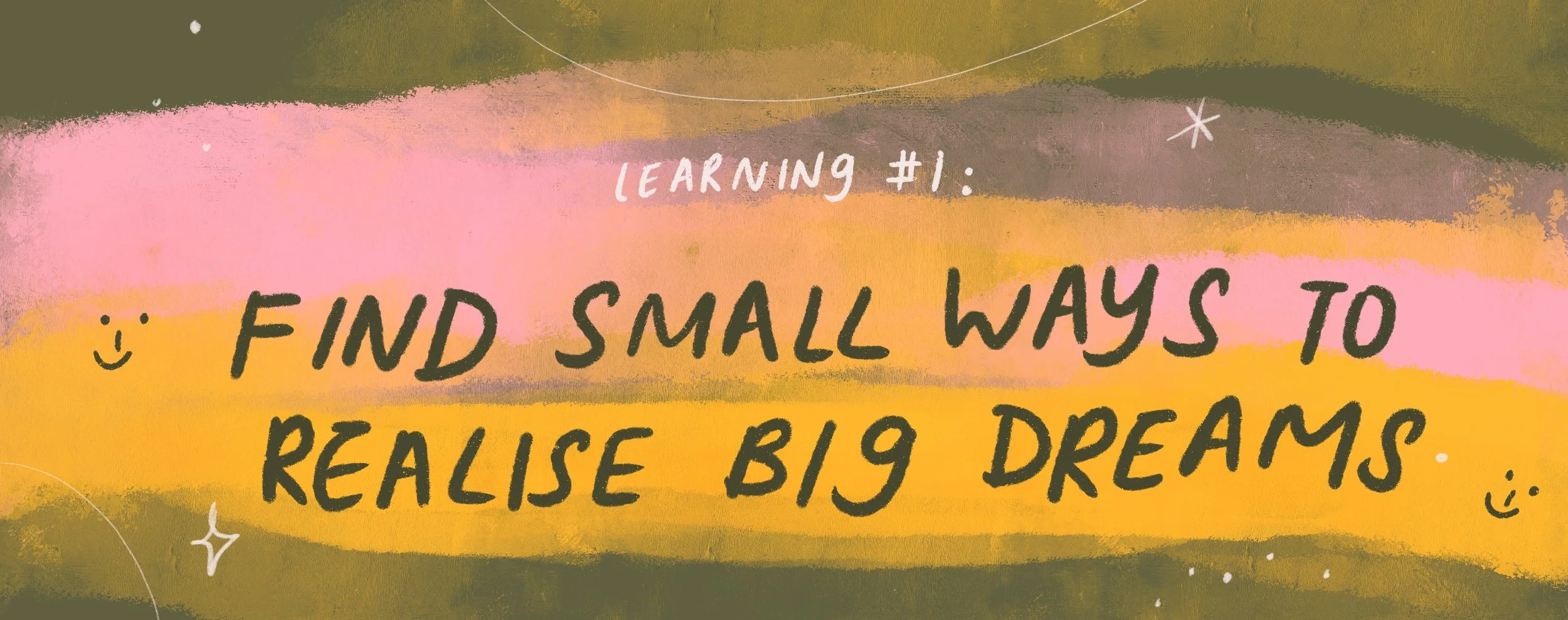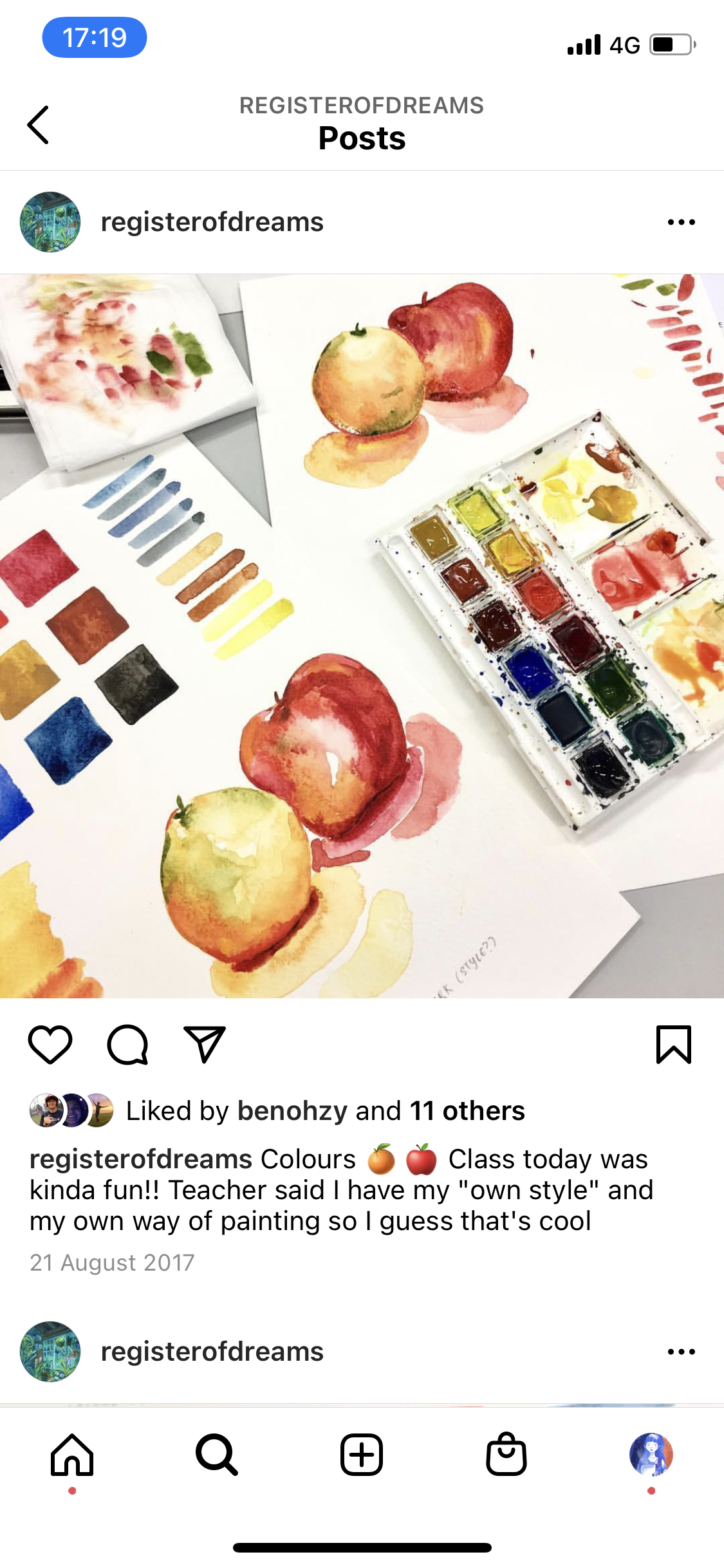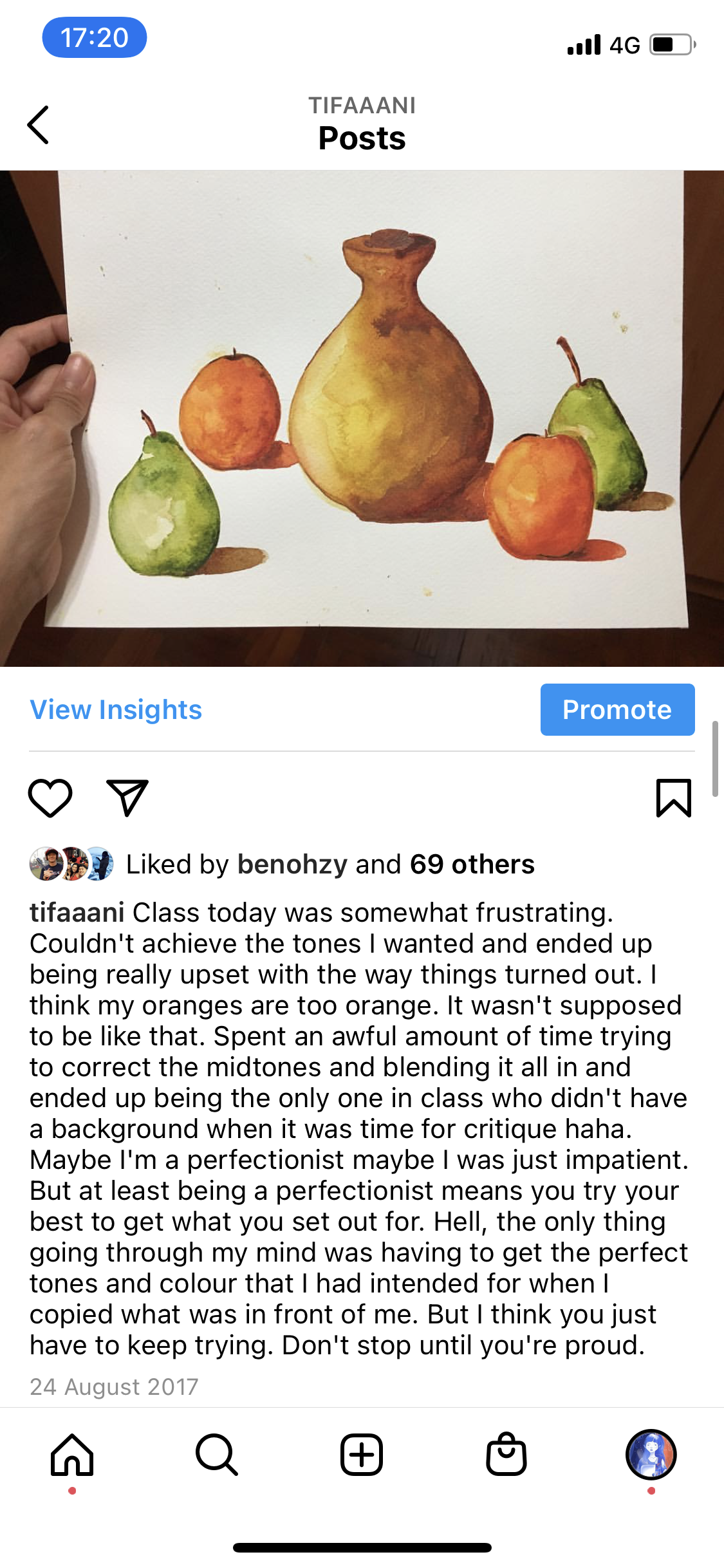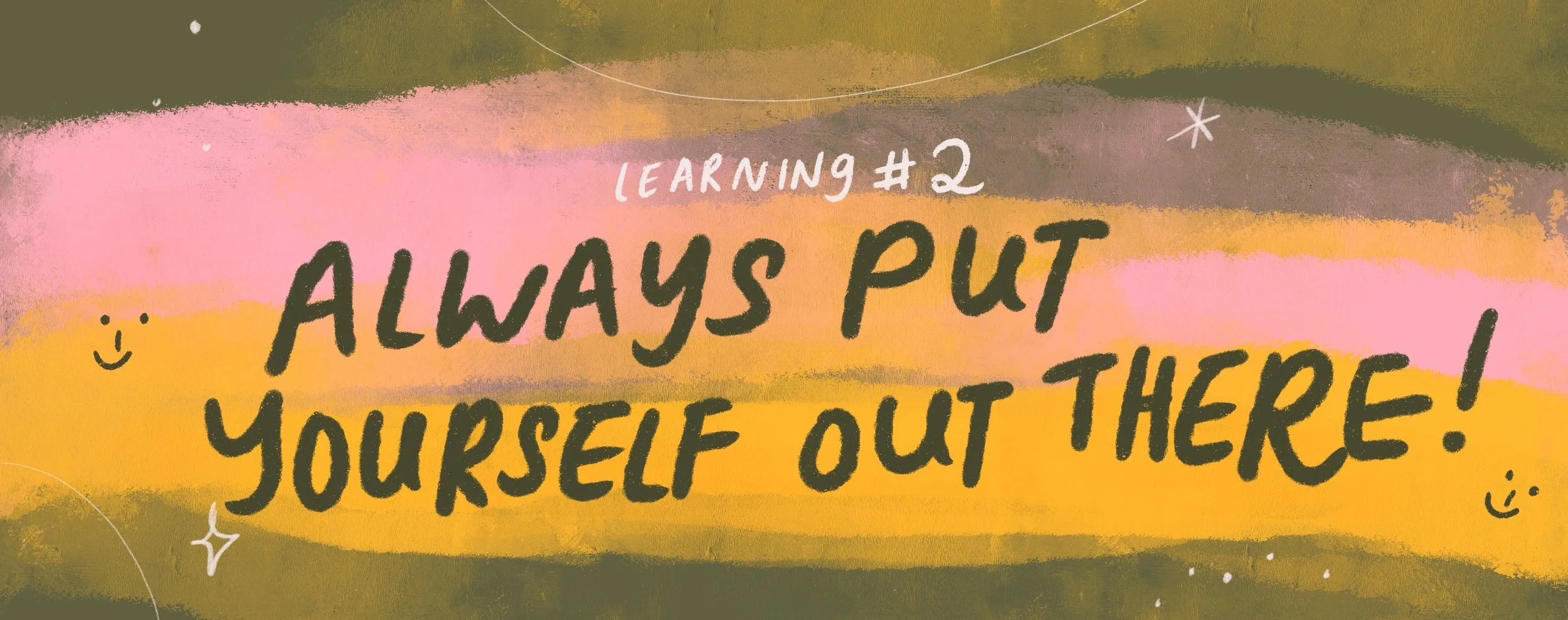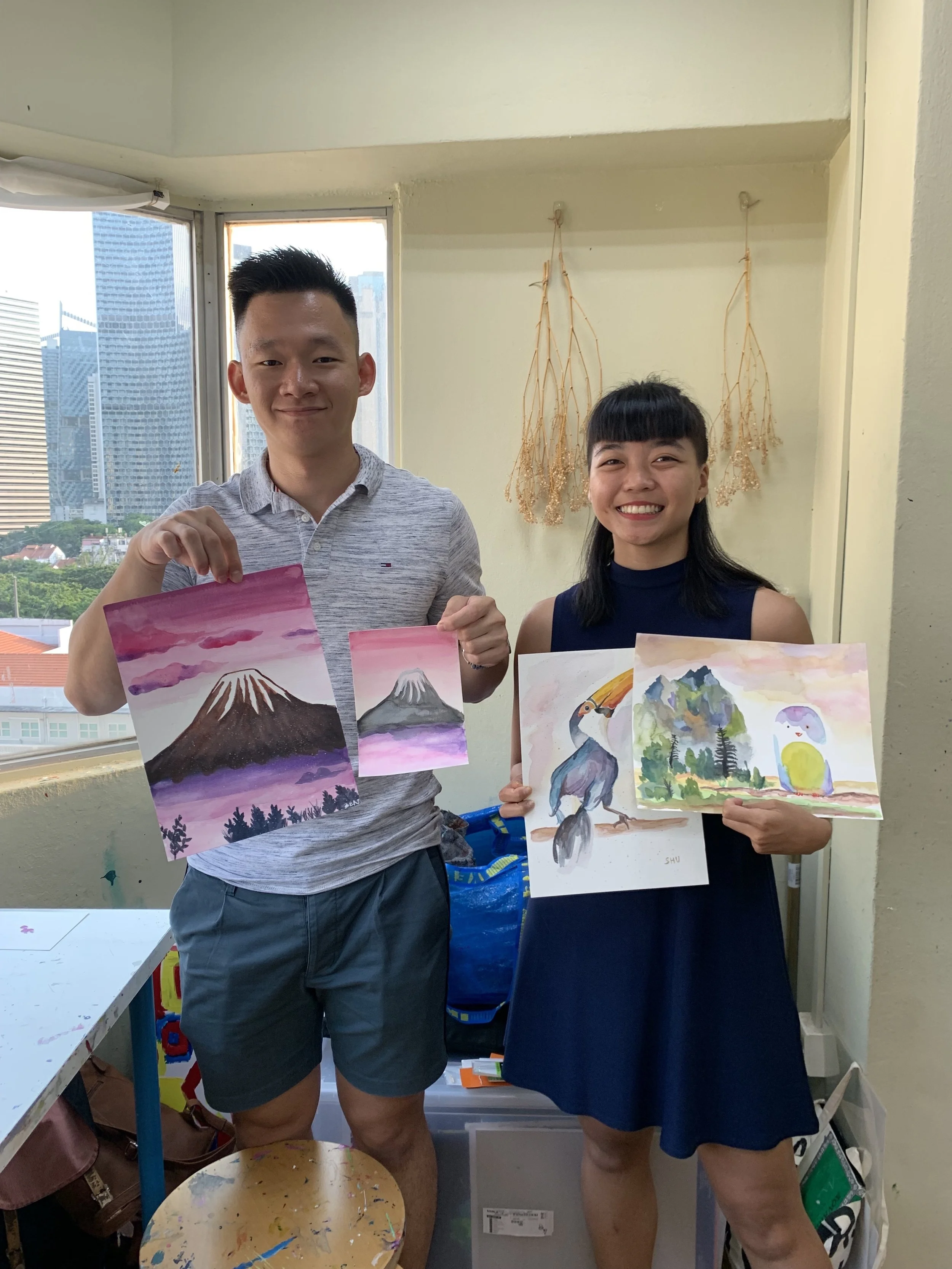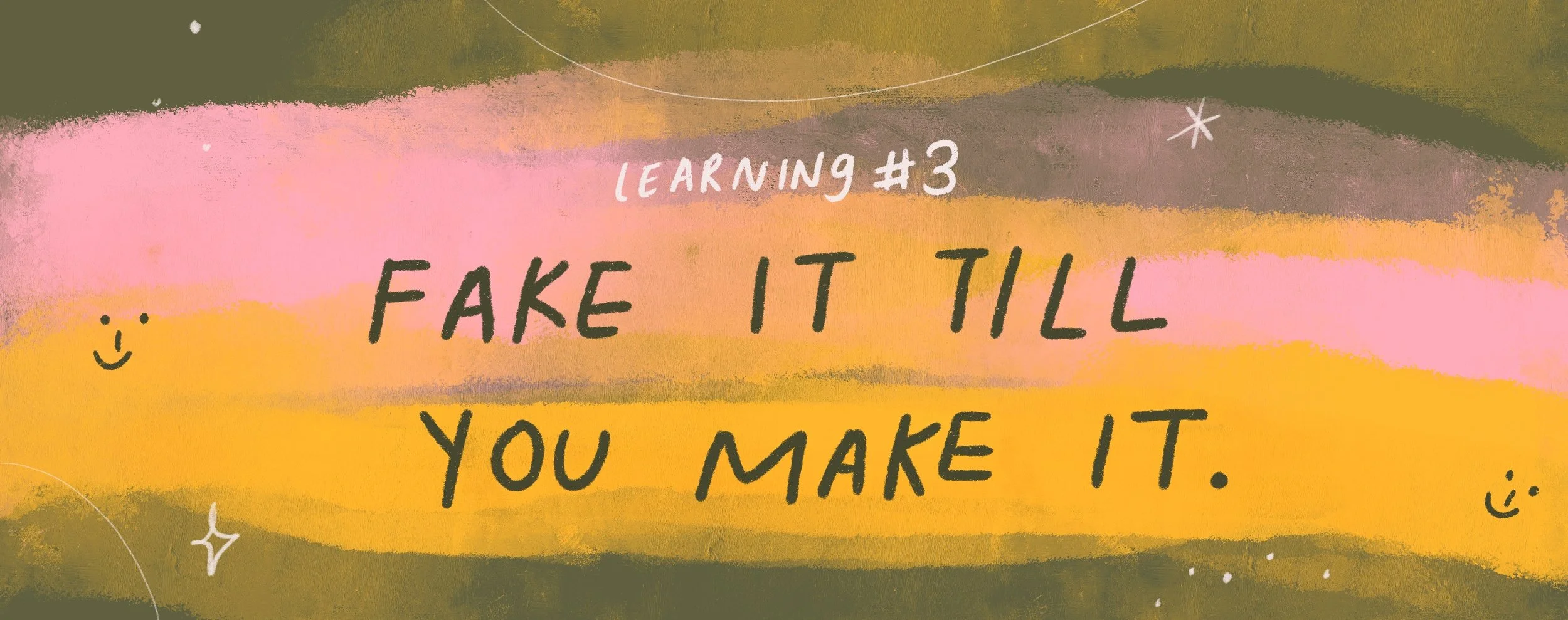Pandemic, Pivoting, Painting: a gap year that that required no traveling, yet brought me closer than ever to where I want to be. (A series, this is part 1)
Part 1: the first 5 years
Let me start by saying that I am aware this might make me sound like yet another Privileged Pandemic (job) Pivoter. Yes, the pandemic hit different people very differently. While some experienced minor inconveniences, the vast majority saw their entire lives up-hauled. The latter being the very reason why I’ve held back on over-sharing my experience so far. BUT, if it’s one thing I’ve learnt in my year of Pandemic Pivoting, it is that “your value will be in what you share, not what you know.” (a quote that a senior leader in google shared when talking about her career journey)
So I will share my learnings and experiences. With my own illustrations, of course.
I chanced upon the Skills Ignition SG program in august last year, when I had just left my job to take a break and pursue creative projects. One year later, I am finishing up my internship with Google’s Large Customers Marketing team, feeling thankful for all that I’ve learnt that has both challenged and changed me as a person.
Had the opportunity to design this banner for our cohort - it’s used in all our SISG collateral, including emails, posters and newsletters.
My team - The Sherpas!
(Google Large Customers Marketing, SEA Marketing)
Many things can change in a year. The pandemic taught us that. My gap year showed me how much I didn’t know, and how much more I have to go as a person. So I will attempt to break out my reflections and ruminations in periods, with some learnings I picked up long the way.
The first five years is about me, jumping straight into advertising after graduating, navigating the corporate agency world, exploring new frontiers, making friends, nEtWoRKinG, delivering campaigns, and so on. I matured a lot, and stopped seeing the world through rose-colored lenses, which can often happen when one is stuck with an idealized perception of the world, having not actually stepped into the weeds.
But it is also about me earning my first pay-cheque so I could fund my own night time art classes - my first taste of attending “art school”, even if only twice a week and after work. It is also about me finding joy and comfort in art, and developing some sort of a relentless discipline so I keep coming back to improve my art, for an hour a day, every night, regardless of how tired I was, even if I had ran 18km that evening.
The first 5 years of me working a corporate job had me sometimes at odds with myself, because although I was a creative person at heart, I was not doing anything remotely close to creative at work, which I was spending more than 8 hours a day on.
(NOTE: I didn’t know what “being a creative person” meant then, but only knew I loved art in the form of art books or beautiful illustrations, loved sketching things, loved how watercolours blended on paper, loved colour palettes of films, spent my time being enthralled by masterpieces including paintings in European museums to Studio Ghibli animations, etc.)
LEARNING #1: Find small ways to realize BIG dreams. Rome was not built in a day.
I’d always wanted to go to art school, but my Asian dad’s focus on practicality obviously did not allow for that. So I found my own way to attend my own form of art school. And I paid for it out of my own pocket, including my own art materials, and that felt good, like I was doing it wholly for myself (and therefore I also held myself accountable).
I didn’t know why I had to keep coming back to art but I did. Most nights I just put my head down to do the work, and my art slowly grew from being a little hobby into an actual commitment, something tied to my identity as a person.
At first, I posted my art on social media for fun. Then I took part in art challenges, small exhibitions, did paid commissions for people, and made actual art friends. One day, I signed up for a workshop at Artify Studio, both on a whim and out of curiosity. I always find it refreshing to attend workshops to learn new things, also, at that time, I was obsessed with “finding my own art style” so I thought a workshop would help.
To my greatest surprise, I received a text message from J, the founder of the studio, telling me I didn’t qualify for the workshop and that she would be refunding me instead. I was shocked at first but accepted the refund, then was shocked a second time when she texted back, “actually are you interested in teaching workshops yourself??”
LEARNING #2: ALWAYS PUT YOURSELF OUT THERE. Consistent hard work will get noticed and will pay off, if only you persist and believe in yourself.
Teaching a workshop, when I had no experience at all, was a little daunting at first. For one, I was chock full of imposter syndrome! Even though I had been painting for a while now and had produced some work I was proud of, it was a different level of scrutiny when put in front of a class of strangers to share my learnings. But I’ve always wanted to work in an art studio, and always wanted to use my craft to build a community. So I met J, vibed it off pretty well, realized we were extremely similar despite coming from polar opposite backgrounds, and accepted the gig.
My first class was a friends and family class, with some other regulars from the studio. Though most of the students were familiar faces my legs were shaking under the table as I spoke! Watercolour, by then, was a natural thing to me. I knew how to work my gradients, mix colours, blend effortlessly, but it was scary trying to balance showing that I knew my sh!t vs. making it easy for others to understand.
My trial class guinea pigs, including Ben, who absolutely exhausted himself painting an A4-sized image of Mount Fuji, but came along with my sister as a grand gesture of support.
I was so scared of coming across as a fraud that I even brought all my paintings and blu-tacked them to the wall of the classroom. When explaining techniques, I brought out more paintings to show what I meant! It’s funny to me now how I tried SO hard in such weird ways but I guess I wanted to show people that I wasn’t a random person who didn’t know her stuff.
The friends and family session went well, and I was mostly relieved that most people came out with a completed painting. With some learnings and 1 trial session under my belt, I taught, planned and launched all kinds of workshops. Now, in 2021, I don’t need my artworks taped up around me to feel like I’m worthy of teaching. I’ve learnt that people can feel it in the way you carry yourself and bring ideas across. When it comes to teaching, it is far more important to make sure you take complex concepts and simplify them to the point that even kids and moms alike can understand. It is as difficult and as simple as that.
LEARNING #3: FAKE IT TILL YOU MAKE IT . Period!!!
I guess this post is long enough about the first 5 years. It’s a little snippet of how I came from just knowing I loved art, to finding a medium that I loved, to honing my skill with utmost discipline, to making it real and taking that hobby public, and even earning a little side income with it. And now, art comes naturally to me. It’s a part of my life and a part of everything I do.
There’s so much more to this story, because I haven’t even covered the part about the nights that I lay in bed thinking how much I would regret if I didn’t dedicate more time to my craft. I haven’t even written about the days that I show up to work on a Monday morning wondering why in the world I was in an office sitting at a desk pivoting excel tables. Or the many times I cried out of frustration, and bitterness, and sadness, so many times, because I was not where I really wanted to be. I’ll save that for part 2: “Quit my job for a bit”, but I’ll also end off with 2 quotes:
“The most regretful people on earth are those who felt the call to creative work, who felt their own creative power restive and uprising, and gave to it neither power nor time.”
― Mary Oliver
And probably the only quote that I default to every time I get an art block:
“Nobody tells this to people who are beginners, I wish someone told me. All of us who do creative work, we get into it because we have good taste. But there is this gap. For the first couple years you make stuff, it’s just not that good. It’s trying to be good, it has potential, but it’s not. But your taste, the thing that got you into the game, is still killer. And your taste is why your work disappoints you. A lot of people never get past this phase, they quit. Most people I know who do interesting, creative work went through years of this. We know our work doesn’t have this special thing that we want it to have. We all go through this. And if you are just starting out or you are still in this phase, you gotta know its normal and the most important thing you can do is do a lot of work. Put yourself on a deadline so that every week you will finish one story. It is only by going through a volume of work that you will close that gap, and your work will be as good as your ambitions. And I took longer to figure out how to do this than anyone I’ve ever met. It’s gonna take awhile. It’s normal to take awhile. You’ve just gotta fight your way through.”
― Ira Glass
This shall do as my first chapter.
Up next: Quit my job for a bit. How long it took, what I thought about, and how I eventually bit the d@mn bullet. :)))
